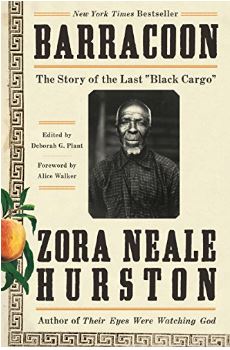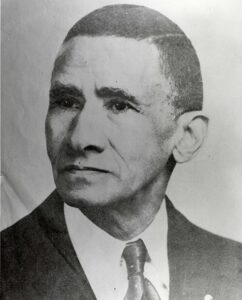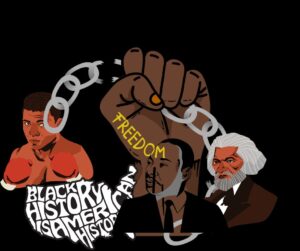Once upon a time in Black Entrepreneur History lived an African man named Cudjoe Kazoola Lewis, born Oluale Kossola, who was captured from the West Coast of Africa by the Dahomey kingdom, which is present day Benin, during an illegal TransAtlantic Slave trade and taken to Alabama, USA where he and others founded AfricaTown. He was the last survivor of the slave ship Clotilda which was discovered underwater in 2018 the same waters where the hidden story was passed down for generations to the descendants of that slave trade.
How Cudjoe Kazoola Lewis Was Captured
It was in 1860 that Cudjoe Kazoola Lewis [born c. 1840s] was living his life with his family in the location believed to be current day Benin, Africa, around where the ethnic group Yoruba mostly lived of the Isha subgroup[2], when he was kidnapped and sold off by the Dahomey Women Warriors in what was an illegal slave trade. The reason it was illegal was because the TransAtlantic Slave Trade was made illegal in 1808 (the institution of slavery was still legal at that time within USA land), however, slave traders were still working the illegal trade. Cudjoe Kazoola Lewis fell victim to this illegal trade. It was this documented last slave ship to the southern United States of America that changed Cudjoe’s life and the life of 109 other African people sold off to America. These are some of the African people who would give birth to some of the first generations of African Americans of the 1800s.
According to The Philadephia Inquirer and a 60 year old businessman named Harry Williams in 1983 who lived directly across the street from “Uncle Cudjoe”, the Dahomey warriors, ordered by the king Glele, attacked the Cudjoe’s ethnic group, demanding half of their crops. When they refused the demands, the Dahomey killed the young and old. The rest of the Cudjoe’s people that were caught were chained and marched to the coast while their the Dahomeys swung the bodies of their dead relatives in front of their eyes on the way. When they got to a place called Whyday in Benin, they were all stripped naked and sold to a man named William Foster. William Foster was commissioned by a white man named Timothy Meaher.
This account is also verified in the book written by Zora Neale Hurston titled Baracoon, who interviewed Cudjoe Lewis while he lived. Cudjoe called his people the “Attako, Taccou and Taccow”, according to Zora Neale Hurston’s writings. She spelled it exactly how he would refer to his people as to not change his dialect. It was this subgroup of people who were wiped out by the Dahomey at Cudjoe’s capture, despite them trying to escape the Dahomey women warriors because when they ran, there were Dahomey men outside, surrounding the camp, chopping their heads off[2]. There was no where to go – die or be captured.

How This Particular Slave Trade Happened on Dahomey African Soil
Timothy Meaher had made a bet with some Northern businessmen that he could get more Africans and enslave them despite the importation of Africans being made illegal. He hired Foster, as stated above, and Foster met with the prince of Dahomey. Native people of the Dahomey went out to meet Foster, lifted him high in a hammock with a canopy in full comfort and carried him to their Dahomey prince who had arranged the quick sale of captured Africans. Foster paid $100 per African, paid for about 109 of them, and put them at the bottom of the Clotilda ship, hidden from plain sight. They then set sail to Alabama, USA, and it was upon landing, they hid the captured African people in a canebrake[1] for a couple weeks.
From there, they were split up and sold off in 1860 to several plantations who’d already paid for them, but it was Cudjoe along with thirty other captured Africans that went to the slaver named Meaher, but slavery was about to end soon after the Civil War. When it did end, they were free in 1865, and with no land and no way to return back to their homeland in the area of Benin, it was Cudjoe along with the others, who decided to make the area their home somehow.
The Founding of AfricaTown, Alabama
According to the documentary “Descendant”, Cudjoe requested land for all the free labor Africans did for Meaher during their short time of enslavement. He was rejected, and this was when Cudjoe and his peers decided to purchase land on their own. To survive after freedom, they fished and trapped animals for food, and they also gardened and sold the produce to earn money[1]. Some even gained employment at a nearby sawmill, and at the same time, Cudjoe and others began building on their own area they purchased and called it AfricaTown. AfricaTown even lived by their own set laws.
Despite having a small town of his own to call home with other new family members, Cudjoe would often cry, missing his mother and longing to return to Africa. His heart would often be heavy, and he even wanted Harry Williams to promise to take him back to Africa. Cudjoe passed away in 1935. He was somewhere between 95 and 104 years of age because his birthdate is uncertain.
Barracoon: The Story of the Last Black Cargo written by the African American author Zora Neale Hurston, documents Cudjoe Lewis’ full account in his own, unaltered words. The story was kept under lock and key until the year 2018. It is now available for all to read.
Sources:
- The Philadelphia Inquirer Philadelphia, Pennsylvania · Sunday, May 29, 1983
- Barracoon: The Story of the Last “Black Cargo”, Zora Neale Hurston.





More Related Stories
Isaac Scott Hathaway – Founder of Isaac Hathaway Art Company & Designer of First African American Coin
James Wormley – Founder of the Most Expensive Hotel in Washington D.C. in 1800s – the Wormley Hotel
William E. Matthews – Wealthy Financial Broker & Civil Rights Leader of 1800s